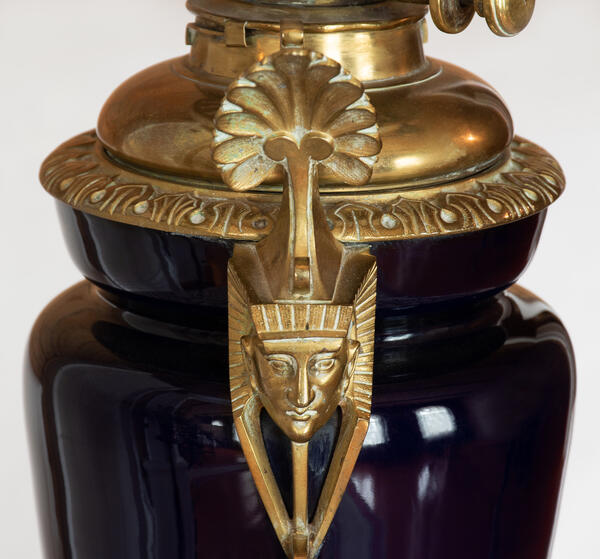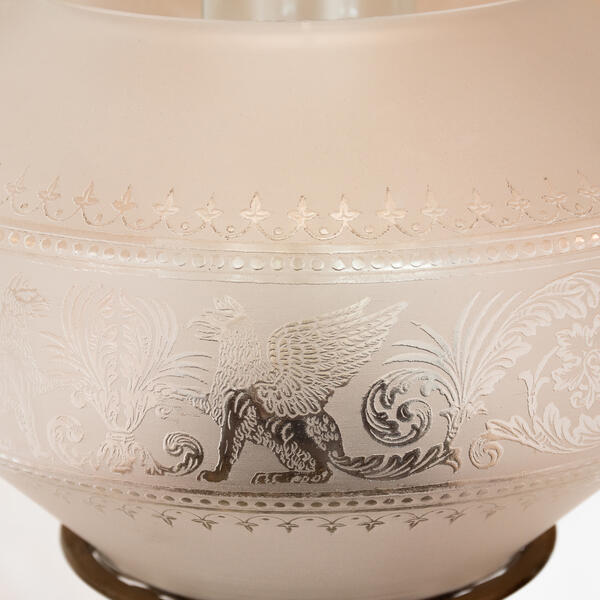The collection features an original kerosene table lamp with a cobalt glass body and decor inspired by Ancient Egypt.
The body of the lighting device is made in the form of a vase on a low cylindrical riser. The lamp is mounted on a square base of yellow metal on four legs in the form of bird wings. Along the perimeter of the platform there are plates that are twisted and decorated with stylized images of birds. A yellow metal kerosene tank is mounted in the object’s body, which is decorated with an engraved edge. The lampshade made of flat glass is also decorated with engraving. It is mounted on an openwork burner with a saucer-shaped middle part. On the sides of the body there are handles in the form of the heads of Egyptian warriors in helmets with crests, which are decorated with palmettes — elements of floral ornament in the form of a palm tree leaf.
A kerosene lamp is a lamp that works on the basis of the combustion of kerosene. This combustible hydrocarbon liquid began to be obtained during the oil refining process. Such lighting devices were popular in the 19th — early 20th century.
It is believed that the first kerosene lamps appeared in the 1850s, when Austrian pharmacists Ignatius Lukasevich and Jan Zech began using kerosene in their own oil lamp in Lviv. At the same time, Rudolf Ditmar from Vienna introduced his design of a kerosene lamp called Viennese Moderateur Lampe. His design was a great success around the world and became the prototype of a mass-produced kerosene lamp, the manufacture of which began in the United States in 1856.
Kerosene lamps appeared in Russia in the 1860s. The classic kerosene lamp consisted of a metal kerosene container, a burner, an air duct glass, a protective metal frame and a lighting brightness control, or key.
The principle of operation was as follows: kerosene
was poured into the container, then a wick was lowered there, the end of which
was clamped in the burner by a special mechanism. The design was created in
such a way that air entered the device from below. The burner in kerosene lamps
was located above the fuel tank, since kerosene was easily absorbed by the
wick. Lamp glass was installed on top of the burner to provide traction and to
protect the flame from the wind. The device was equipped with a frame for
carrying and hanging.





